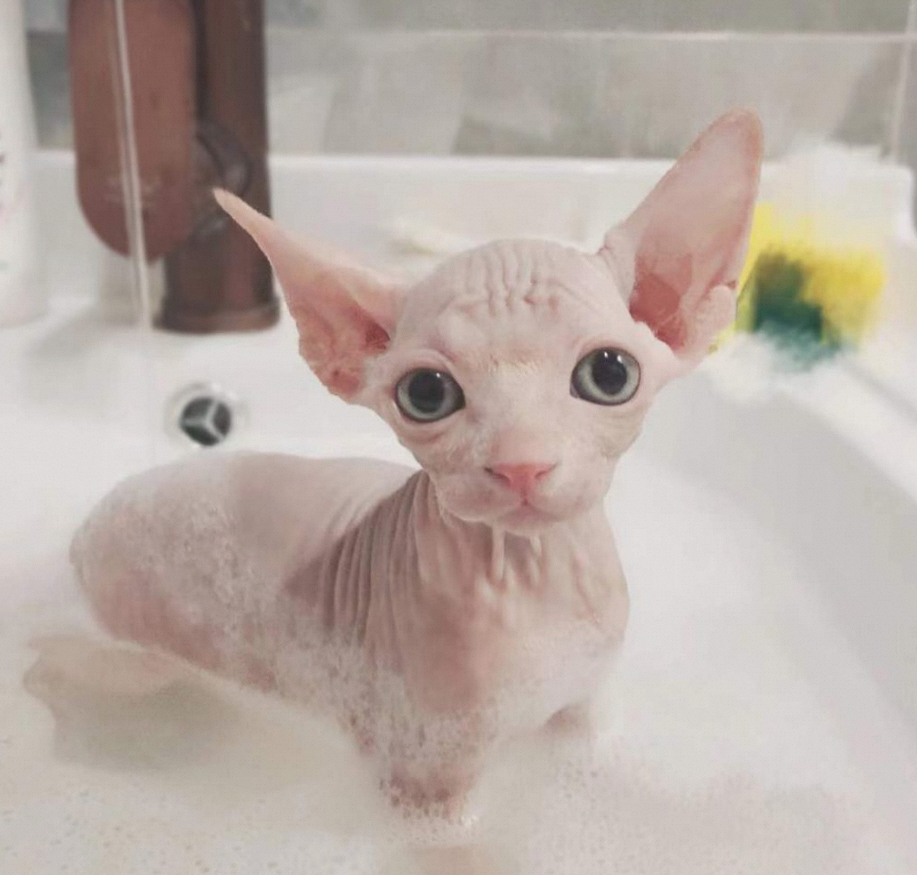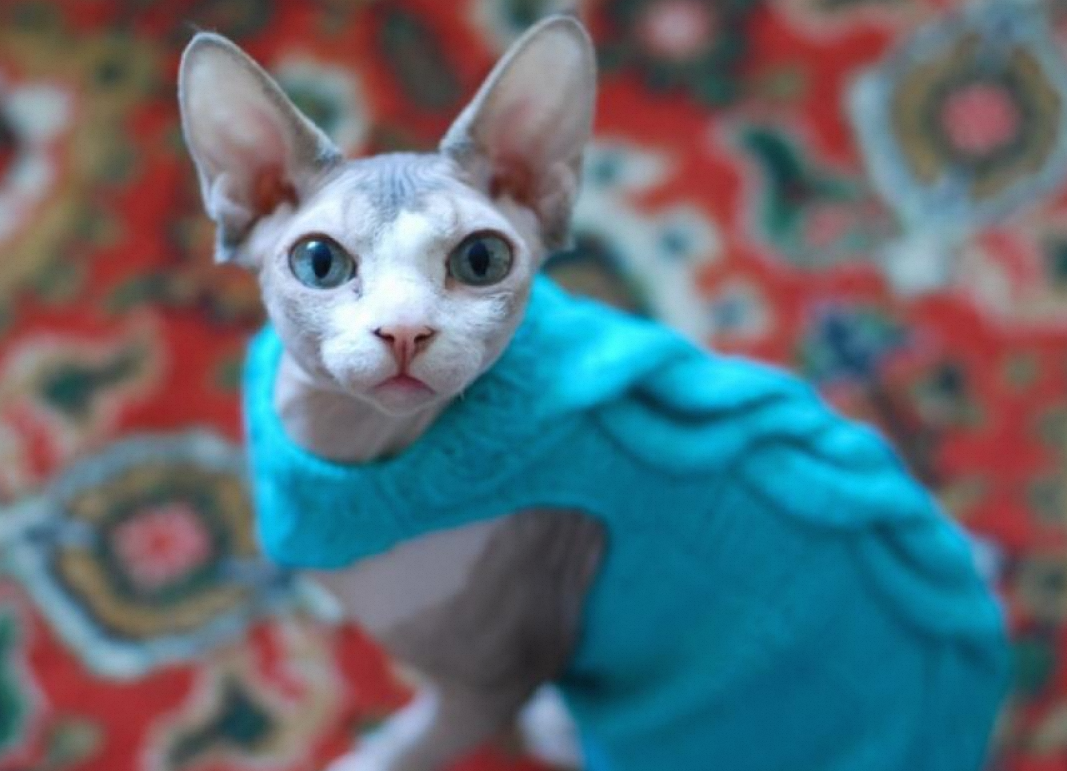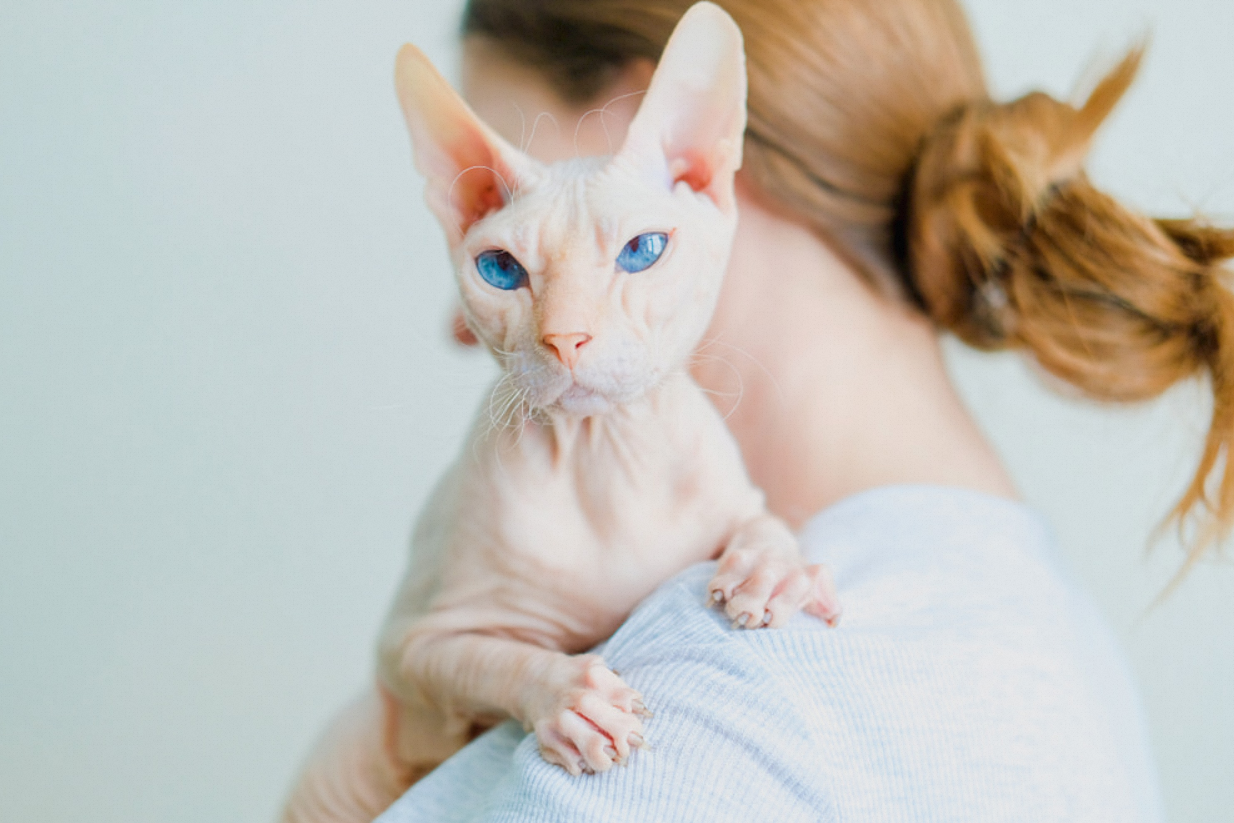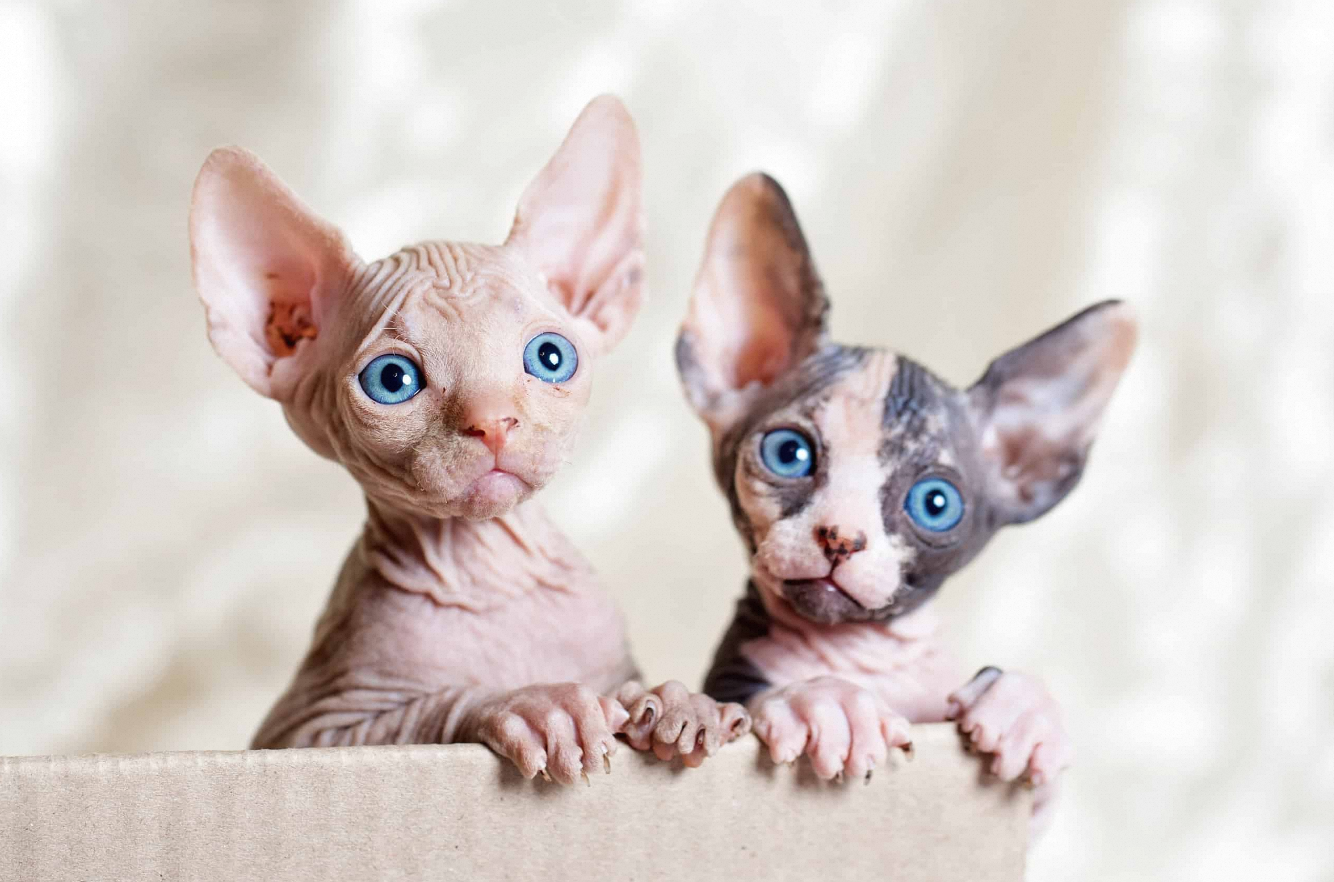Raising a hairless cat is a special pet-raising process. Because hairless kittens have more sensitive skin, they need to pay special attention to their skin health and warmth. Here are some basic common sense tips for novice owners of hairless cats. Hope it helps you take better care of your pets.
In This Article
Ensure good daily care
1. Skin care: Hairless cats’ skin is easily injured and irritated. The skin needs to be checked regularly for redness, swelling, breakage, or other abnormalities. You can use a special skin moisturizer or coconut oil to gently apply to your cat’s skin to keep it moist and healthy.
2. Temperature control: Since hairless kittens have no protection from hair and are more sensitive to temperature, they are prone to catching cold or overheating. Keep the room temperature appropriate in winter to provide a warm sleeping environment for cats. Avoid hot places in summer and bathe and clean cats regularly to keep their skin clean.
 3. Daily cleaning: Hairless cats rarely lick their fur because their bodies are hairless. Moreover, their skin has many wrinkles, and their skin often secretes oil, making it very dirty. Although raising a hairless kitten eliminates the problem of hair loss, you must regularly clean the dirt on its skin folds. You can use a soft damp cloth or pet wipes to clean your cat’s body surfaces.
3. Daily cleaning: Hairless cats rarely lick their fur because their bodies are hairless. Moreover, their skin has many wrinkles, and their skin often secretes oil, making it very dirty. Although raising a hairless kitten eliminates the problem of hair loss, you must regularly clean the dirt on its skin folds. You can use a soft damp cloth or pet wipes to clean your cat’s body surfaces.
4. Sun protection measures: Hairless kittens are allergic to sunlight and are prone to sunburn. When the sun is strong, avoid exposing your cat directly to the sun. You can use sunscreen spray or moisturizer for your cat, or wear sun-protective clothing for your cat.
Basic skin care products recommend for you:
- Gentle Cat Shampoo: Look for a mild, hypoallergenic cat shampoo formulated specifically for hairless kittens or those with sensitive skin. Avoid using human shampoos or products containing harsh chemicals as they can irritate delicate skin.
- Moisturizing lotion or oil: Hairless kittens may need regular moisturizing to keep their skin hydrated and prevent dryness. Choose a cat-specific moisturizing lotion or oil that is free of fragrances and additives. Apply a small amount of product to skin, paying attention to areas prone to dryness or irritation.
- Pet-Safe Sunscreen: Hairless kittens are very susceptible to sunburn, so it’s crucial to use pet-safe sunscreen when they’re exposed to the sun.Ear Cleaning Solution: Regular ear cleaning is important for hairless kittens as dirt and wax can accumulate in their ears. Use a mild cat-specific ear cleaning solution to help remove debris and maintain good ear hygiene.
- Paw Balm: Hairless kittens may have more sensitive paw pads than furry cats. Consider using a cat-safe paw balm to protect their paws from dryness, cracks, and rough surfaces.
Disease prevention and health monitoring
1. Regular veterinary examinations: Take hairless cats to the veterinarian regularly for physical examinations and vaccinations to ensure their health.
2. Prevent fleas and mites: The skin of hairless kittens is easily attacked by fleas and mites. Use special flea and mite preventive drugs for prevention, and regularly deworm the cat.
3. Observe behavior and signs: Closely observe the behavior and signs of hairless cats. Such as whether appetite, mental state, urination and defecation are normal. If you notice any abnormalities, consult your veterinarian promptly for diagnosis and treatment.
4. Care for the health of bones and joints: Hairless cats are more susceptible to bone diseases. We must pay attention to supplementing them with various nutrients such as calcium, protein, and vitamins in their daily diet. Pay attention to a balanced diet.
Provide suitable environment and activities
1. Create a warm shelter: Prepare a comfortable, warm bed or nest for your cat in your home. A thermal pad or blanket can be added for extra warmth.
2. Avoid a humid environment: Hairless kittens have no hair, so their skin lacks the protection of hair. Pay attention to the environmental humidity during feeding. If a hairless cat is often kept in a humid place, the hairless cat will be very prone to skin diseases. Therefore, it is best to keep the environment where hairless cats are kept dry.
3. Provide appropriate toys and activities: Although hairless kittens have no hair, they still need exercise and activities. Provide a variety of toys suitable for hairless cats, such as activity wheels, cat paw boards, etc., to keep cats active and healthy.
Diet management
1. Nutritionally balanced: Whether it is a hairless cat or other cats, they need nutritionally balanced food to stay healthy. Choose high-quality cat food to ensure your cat gets enough protein, vitamins and minerals.
 2. Pay attention to gastrointestinal problems: Hairless cats are prone to gastrointestinal problems, such as indigestion or constipation. Provide your cat with adequate drinking water. And add fiber-textured foods appropriately, such as vegetables or cat grass. This helps promote digestion and bowel movements.
2. Pay attention to gastrointestinal problems: Hairless cats are prone to gastrointestinal problems, such as indigestion or constipation. Provide your cat with adequate drinking water. And add fiber-textured foods appropriately, such as vegetables or cat grass. This helps promote digestion and bowel movements.
Develop good daily habits
1. Regular feeding: Establish the habit of regular and quantitative feeding and develop good eating behavior.
2. Daily interactions: Hairless cats are gentle and non-aggressive. They get along well with humans and other animals. Hairless cats are very intelligent and like to play and interact with their owners. With proper training and interaction, hairless cats can learn some simple commands and techniques that can increase their intelligence and enrich their lives. Owners can use small treats as rewards to reward and encourage their good behavior in a positive way.
The above are five important things to note when raising hairless kittens for beginners. Hopefully owners who decide to get a hairless cat welcome a healthy new member. If you have decided to give them a warm home, you must raise hairless cats with care and be responsible for them to the end!
